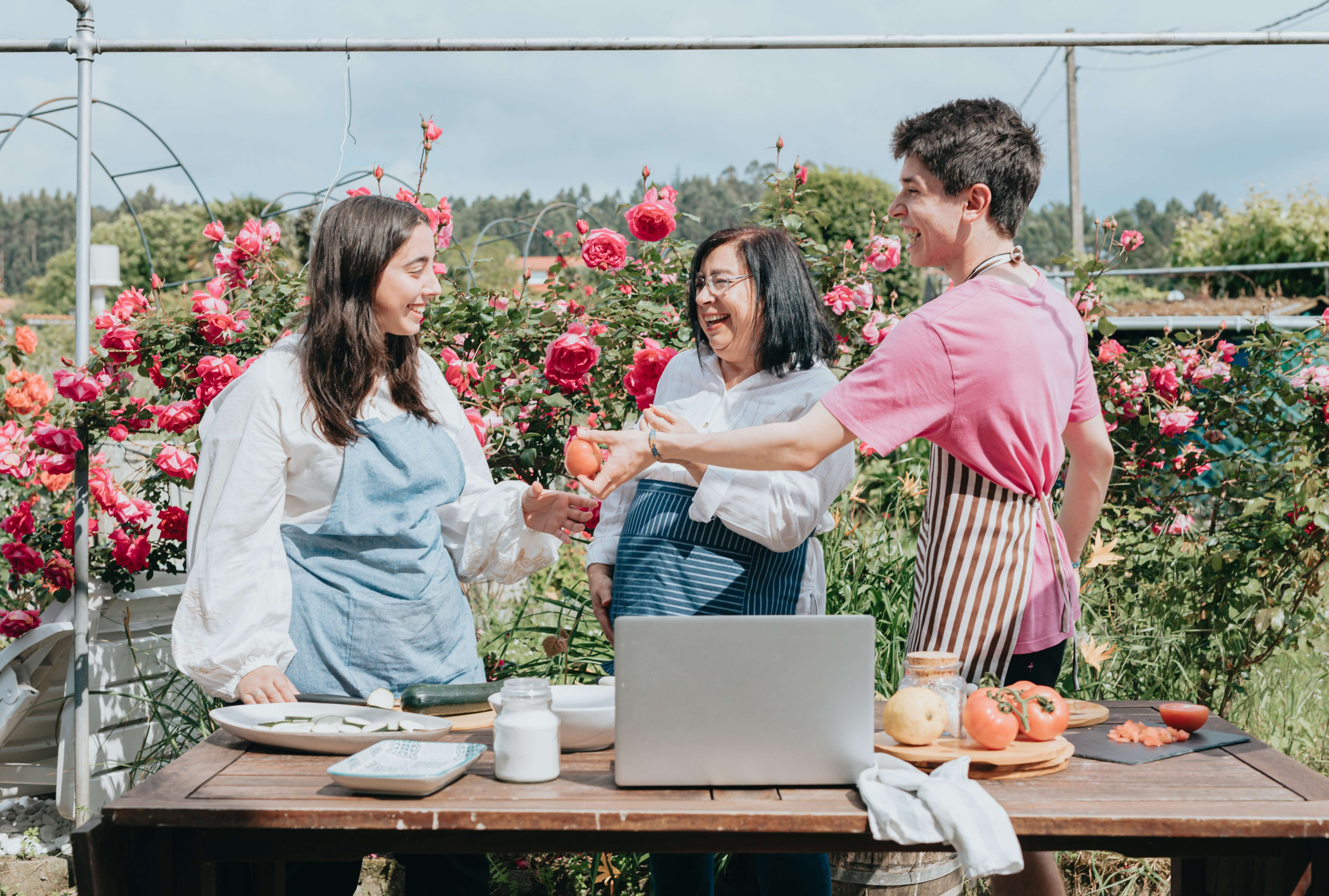Photo by Oren Atias on Unsplash
“There’s no place like home…” Dorothy famously uttered in The Wizard of Oz. That may well be true. But what we mean by “home” has changed markedly in recent years, particularly within advanced, industrial countries. One of the most interesting and promising innovations in housing has been the rise of multigenerational homes.
According to Pew Research Centre, the number of people living in multigenerational family households in the United States quadrupled between 1971 and 2021. A record 64 million Americans now live in such dwellings. In Canada, multigenerational homes as the fast-growing household types in recent decades, growing by 50% since 2001. Even the UK, historically one of the most age-segregated countries, is slowly coming on board. Research by the commercial real estate services company CBRE found that 1.8 million UK households contained two or more adult generations in 2020, an increase of 38% in just 10 years.
What intrigues me more, however, are the plethora of innovative forms multigenerational housing takes outside of families.
It’s not hard to understand the appeal of a multi-generational household. For starters, people are living longer than ever before. This, together with the rise of the “ageing in place” movement, means that the demand for senior-friendly housing is increasing. But housing is expensive— particularly for young people and older people need income once they stop working. Not surprisingly, the primary factor driving the rise in multi-generational housing in America is financial need, according to Pew. Their research also shows that poverty levels are lower for Americans living within multigenerational households than outside them.
There are also social and public health benefits to intergenerational living. Although systematic reviews and meta-analyses on intergenerational housing are limited, preliminary research suggests that increased social contact across generations is associated with a lower risk of developing dementia for the older age groups. In turn, children improve their language development and reading, as well as cultivating social skills like tolerance and empathy.
At the societal level, such housing holds the promise of addressing age discrimination. Perhaps its greatest advantage, however, is its contribution to tackling the loneliness epidemic. As I wrote in last month’s blog, social isolation is associated with major adverse health outcomes and increased mortality for older people. Intergenerational programs provide an opportunity for seniors to foster and maintain strong and meaningful social ties.
So-called “Granny flats” (Can we really not come up with a more appealing name, folks?) have been around for a while, although their popularity is currently soaring in both the UK and the US. This model avoids forcing an elderly relative to navigate stairs, rugs, and narrow doorways. Instead, the individual lives instead within a small, adjacent one-story annex. These dwellings enable families to pool resources, should one member of the family lose their job, for example. They also serve as a safe and cost-effective way to manage childcare and elder care simultaneously. Granny flats are a form of intra-family social insurance.
What intrigues me more, however, are the plethora of innovative forms multigenerational housing takes outside of families. The Cleveland Music School was an early pioneer in this area. Beginning in 2010, a select number of young students were allowed to live rent-free in a retirement home in exchange for performing concerts. A couple of years later, the Humanitas nursing home in the Netherlands followed suit. University students could live rent-free in exchange for spending 30 hours per week with older residents. In Japan, AOI Care deliberately embedded a retirement home inside a residential neighbourhood, where residents are encouraged to interact independently with children on their street. In addition, a childcare facility is located on-site, and female employees can bring their children to work, affording multiple points of entry for intergenerational interactions.
Those isolated experiments in intergenerational living are now growing, aided by digital technology. In British Columbia, for example, an app called Happipad connects older people looking for company inside their own homes with younger people looking for affordable housing. Nesterly does the same thing in the US. In the UK, the Share My Home website places young “companions” in the homes of older residents at a reasonable rent.
Perhaps the greatest promise lies in the “Village” model of residential living springing up across the world. The most famous example is probably the Municipal Project for Intergenerational Housing and Community services in Spain. This project, set up in 2003, includes the provision of 244 affordable, intergenerational housing units on three different sites in central urban areas. The units are owned by the municipality and reserved for public use. Residents include low-income older persons over the age of 65 (78 per cent of residents) and low-income young people under the age of 35 (22 per cent of residents). As well as private apartments, there are many spaces dedicated to communal services such as a library, a computer centre, a solarium, a roof garden and a laundry.
More recently, several facilities in the U.S. and Canada have also begun to embrace this “Village” Model under private ownership. Children as young as five can attend an on-site Kindergarten, while there are a variety of activities for older residents as well. Emma Garland, who travelled around the US to visit a number of these facilities in 2017, reports that they seemed to work well as a model for supported housing. They seem to create friendly, neighbourly, supportive communities where residents of all ages engage and interact, with a variety of benefits to individuals, the community and the state.
So if this innovative form of living is so wonderful, why isn’t everyone doing it?
So if this innovative form of living is so wonderful, why isn’t everyone doing it? Part of the reason may just be that it’s so new. Funding may also be a limitation. Alicante notwithstanding, most of the initiatives listed above are privately run, which may limit their scale. Some have suggested that public-private funding, as is the case with Nesterly, may be the way forward.
Photo by Ave Calvar on Unsplash
Culture may also play a role. As someone who shares both British and American citizenship, I’ve always marvelled at the paucity of care homes in the UK. Despite population growth overall, and a surge in the number of people over 65, the number of British people living in care homes in 2021 decreased from 3.2% in 2011 to 2.5% in 2021. As Emma Garland reports, British people hold very negative attitudes towards specialist housing of any sort, seeing them as resulting in a significant loss of independence, control and privacy. Perhaps this is set to change. As the evidence base grows around multi-generational housing, maybe a cross-family model will have more appeal in the U.K.
At the very end of The Wizard of Oz, Dorothy wakes up from her dream. She realises that of the people who surrounded her in Oz—the local doctor and the farm hands—were all part of her real-life home as well. Dorothy was a woman ahead of her time. She was already demonstrating the value of intergenerational and inter-family living. In so doing, she was redefining a notion of home the rest of us are now, finally, beginning to buy into decades later.

 &
& 






